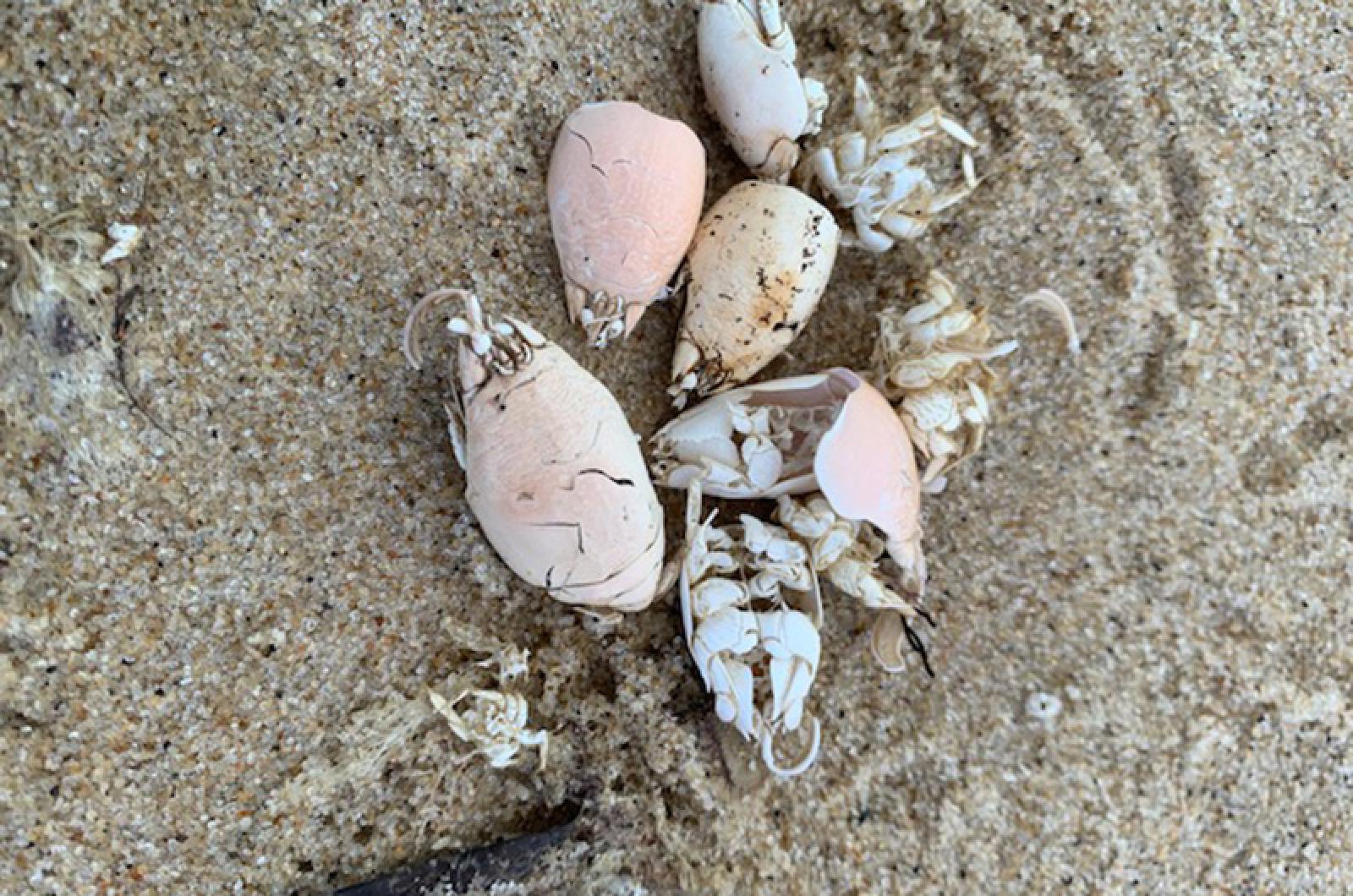Dig in and hold on.
If mole crabs had a motto, that might be it. And even more remarkable is that they dig themselves into the sand backwards, in under a minute and a half, with waves crashing on them.
In fact, mole crabs can’t locomote forward or sideways at all. Digging is their only duty; they cannot walk or swim and are at the will of the water, conveyed only by waves and currents. And move they must, since tides flood or ebb, and mole crabs must stay in the ever-moving swash zone.
Mole crabs are small barrel-shaped crustaceans found on south shore Island beaches. Depending on where you live, they might be called sand crabs, sand diggers, sand fleas or sand fiddlers. Scientifically they are Emerita talopoida and are members of the Anomura crab clan, which are not considered “true crabs” like the well-known blue crab. Other Anomuras include hermit crabs, porcelain crabs and king crabs. While you often see mole crab carcasses strewn at the wrack line, go further toward the ocean in the swash line (zone of breaking waves) to find live ones.
You can entertain yourself and your family and friends for hours catching and sharing these daring diggers. Look for the tell-tale sign that they are just below the surfaces — bubbles emerging as a wave recedes. These bubbles result from the air that escapes their burrows as they excavate. Once in place the animal waits in these burrows, eyestalks and antennae sticking out of the sand, for the tide to wash over them. They use those protuberances to filter the plankton on which they feed.
A mole crab’s burrowing skill is noteworthy and is made possible by its pointy tail and leg-like appendages, called uropods, that pass sand grains up and out. The frantic beating of their uropods cause the wet sand to become like a slurry. The phenomenon, called liquefaction, is being studied by scientists trying to build robots that could mimic the effectiveness of the mole crab’s excavation technique.
The in and out activities, necessitated by the tides that dislodge them, allow mole crabs to escape the many predators that might want to eat them, including fish, birds and other crustaceans. Mole crab morsels are so tasty to fish that anglers use them for bait. According to the angler in my house, striped bass love them.
As do some epicureans. Mole crabs are edible and are considered delicacies by some. Put your family to work and you may be able to harvest dinner. Some folks eat the entire animal, while others remove some of the innards. Suggestions for preparations include fried, battered or boiled mole crabs. Others insist that stock or chowder is the way to go and that these crustaceans taste like a crunchy cross between more commonly eaten crabs and shrimp. A word of caution for those that might partake: mole crabs can hold harmful toxic algae in their bodies, so only harvest from places you know are not affected.
So if you don’t like backing down from a challenge, you might try catching and tasting this coy crustacean who specializes in doing just that.
Suzan Bellincampi is director of the Felix Neck Wildlife Sanctuary in Edgartown, and author of Martha’s Vineyard: A Field Guide to Island Nature and The Nature of Martha’s Vineyard.




Comments
Comment policy »